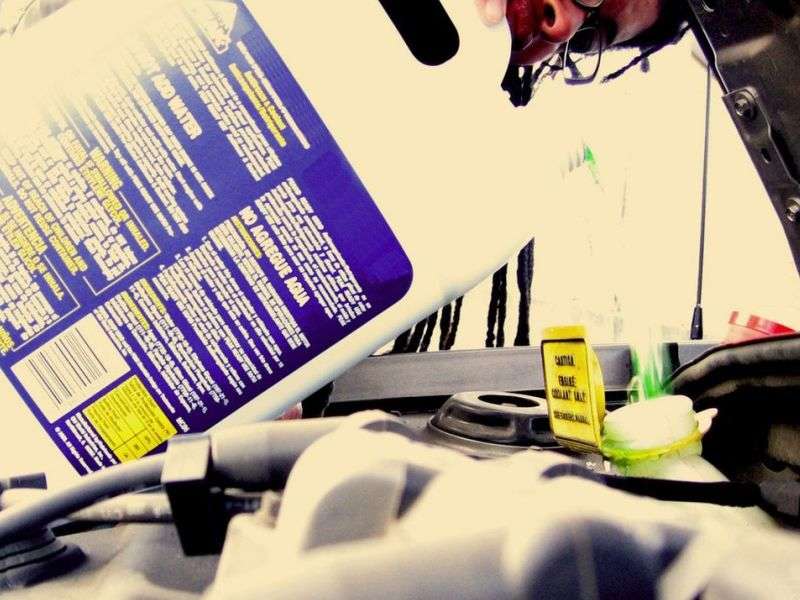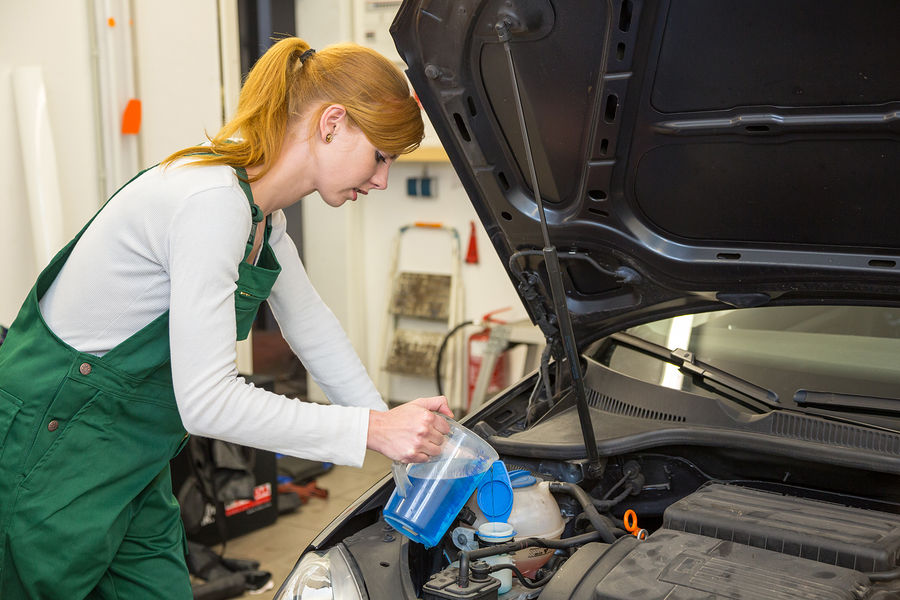Recent Articles
Popular Makes
Body Types
How To Check Coolant

pouring antifreeze
The coolant in your car's engine is what keeps it running at a reasonable temperature and prevents it from overheating. While coolant doesn't transfer heat quite as well as water, it does help keep parts of the cooling system from oxidizing and rusting, raises the boiling point, and lowers the freezing point. It's a good idea to check the condition of your coolant, especially before cold weather sets in. Knowing how to check coolant could prevent you from having a freeze plug pop out of your engine, or worse, a cracked engine block.
Always check the coolant when the engine is cold. The first thing to check is the fluid level. It should be between the low and high marks on the overflow reservoir, or if the car doesn't have an overflow, it should be visible at the top of the radiator when the cap is removed. If you find yourself frequently refilling the coolant reservoir you could have a leak in the radiator, waterpump, heater core, or one of the radiator hoses, or you could be burning the coolant because of a problem in the engine like a broken head gasket. Next, do a visual check on the condition of the antifreeze. There are many different types and colors of antifreeze, but most (when properly mixed with distilled water) should be fairly translucent and free of sludge.
# How To Check Coolant
To check the freezing point of your coolant, you will need to use either a hydrometer or a refractometer. A hydrometer can normally only be used with the traditional green ethylene glycol antifreeze, if your car uses a different type it's best to go with a refractometer. Both of these tools should be available relatively inexpensively. With the hydrometer, simply compress the bulb, stick the tube into the coolant, and let go of the bulb. Fluid should be sucked into the device, and the needle should swing to the freezing point of your antifreeze. With the refractometer, follow the steps that come with your device. Typically this will involve zeroing the device with water, then testing the antifreeze, and finally using a chart to find the concentration and freezing point of your antifreeze.
The last test you can do is to check the pH content or or acidity of your coolant using test strips. Some test strips turn different colors based on the pH content while others will have strips of different values that can be used to narrow down the pH range. The test strips should come with instructions as well as the normal range for most coolants. You can also contact your coolant manufacturer to determine their recommended range.
If your coolant fails any of these tests you should have your cooling system drained, flushed and refilled. Keeping your antifreeze in good shape will help prolong the life of your cooling system and keep your car running at the proper temperature both winter and summer.
